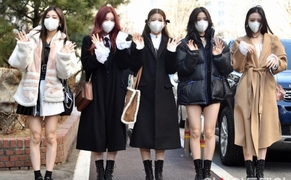 |
| U.S. President Donald Trump (left) and Chinese President Xi Jinping face each other during a summit held on the sidelines of the G20 meeting in Osaka, Japan, on June 29, 2019. / Source: AP-Yonhap News |
U.S. President Donald Trump on April 23 hinted that he may reduce the current 145% tariff rate on Chinese imports, contingent on China's response.
Speaking from the Oval Office following the signing of an executive order, Trump was asked how soon tariffs on Chinese goods could be lowered. “That depends on China,” he replied.
“We’ll determine the tariff rate we’ll choose in the next two to three weeks,” he added. “It may be related to China.”
The day before, Trump had also commented on the issue at the White House, noting that the 145% rate was influenced by the fentanyl crisis and other factors. He said the tariff would “go down significantly” following trade negotiations, though “not to zero.”
According to The Wall Street Journal, the Trump administration is considering slashing the tariff on Chinese imports to as low as 35%. A senior White House official told the paper that the rate could likely be reduced to between 50% and 60%.
The administration is reportedly exploring a phased approach similar to one recommended last year by the House Select Committee on the Strategic Competition between the U.S. and China. That plan proposed a minimum 100% tariff on goods linked to U.S. strategic interests, and a 35% tariff on non-security-related items, implemented gradually over five years.
However, even if Trump cuts tariffs by half, WSJ noted that the resulting levels would still effectively shut Chinese manufacturers of electrical machinery and other goods out of the U.S. market.
Sources said discussions remain fluid and that no final decision has been made. A senior Trump administration official emphasized that any reduction would not be unilateral—China would need to reciprocate by easing its own retaliatory tariffs, which currently stand at 125% on U.S. goods.
Most Read
-
1
-
2
-
3
-
4
-
5
-
6
-
7





















